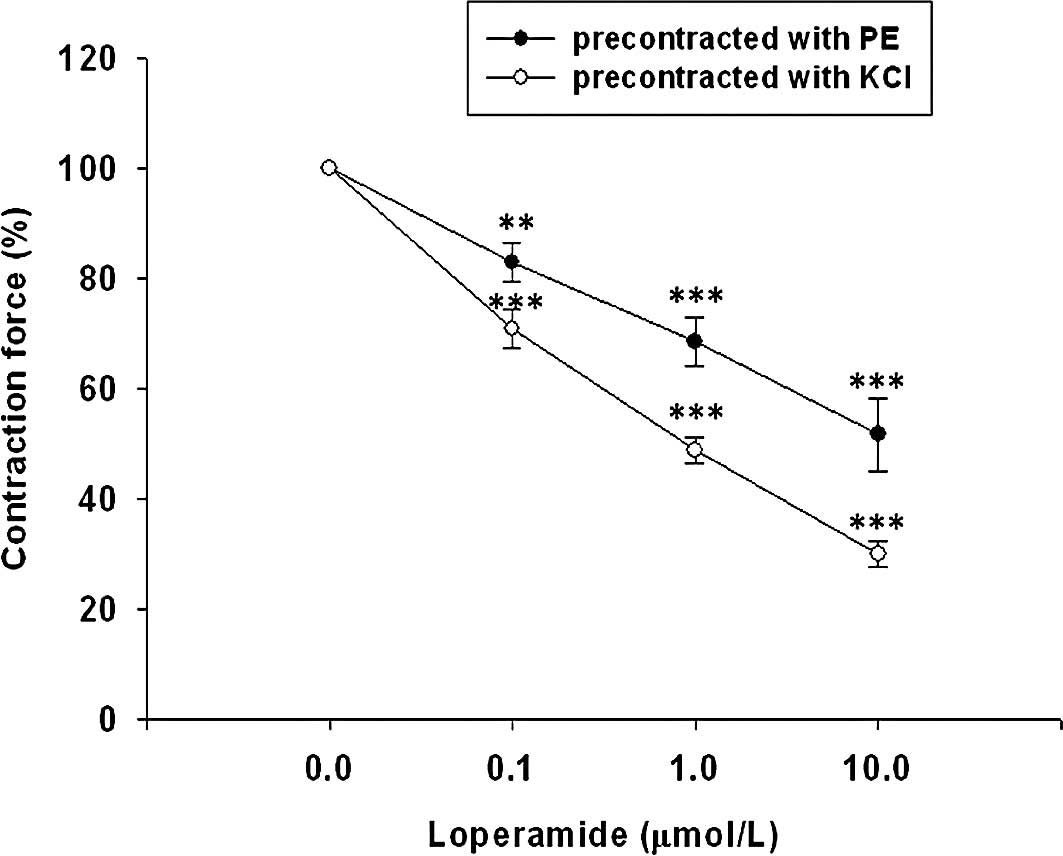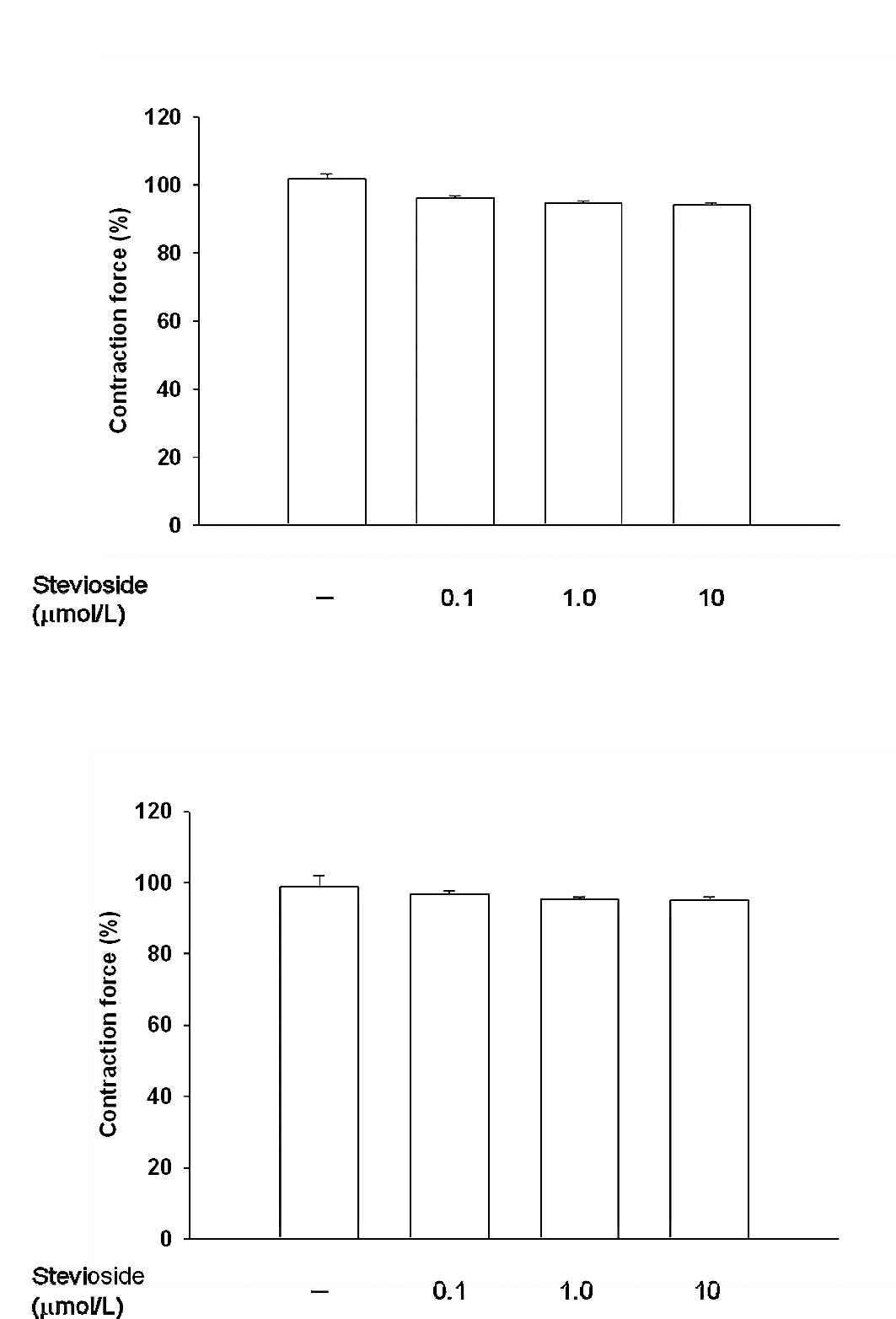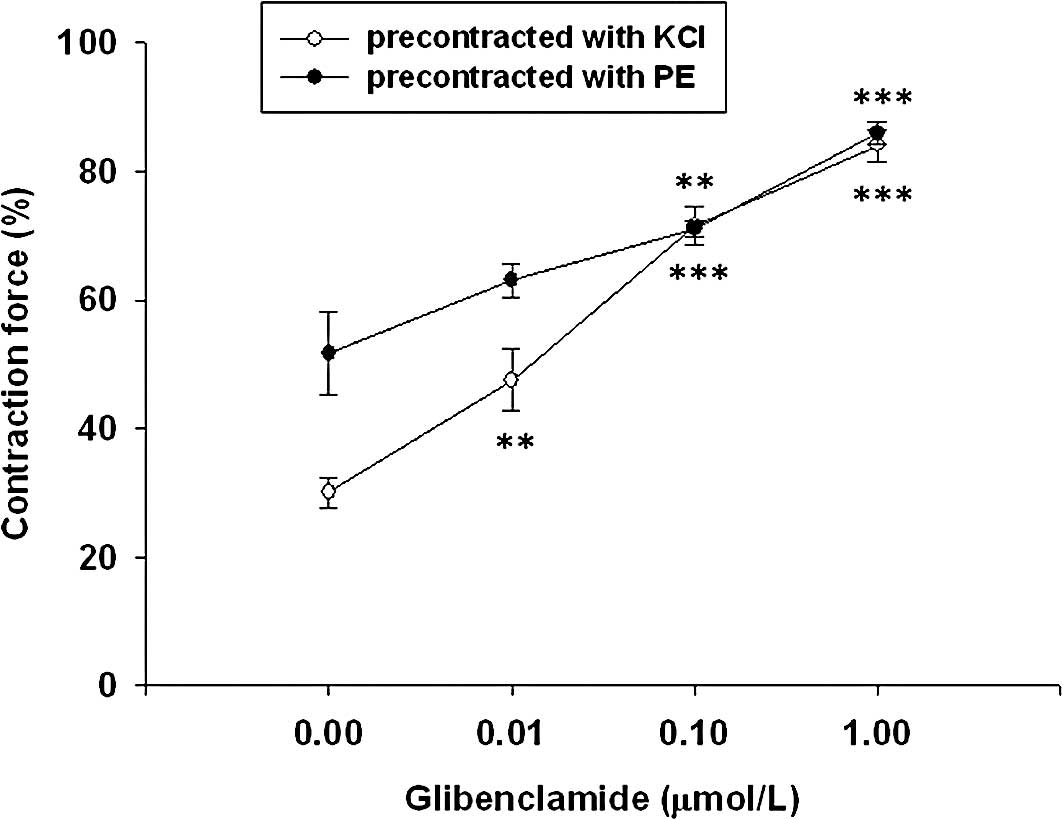|
1.
|
Tiwari A, Krishna NS, Nanda K and Chugh A:
Benign prostatic hyperplasia: an insight into current
investigational medical therapies. Expert Opin Investig Drugs.
14:1359–1372. 2005. View Article : Google Scholar : PubMed/NCBI
|
|
2.
|
Hellstrom WJ and Sikka SC: Effects of
acute treatment with tamsulosin versus alfuzosin on ejaculatory
function in normal volunteers. J Urol. 176:1529–1533. 2006.
View Article : Google Scholar
|
|
3.
|
Roehrborn CG, Marks LS, Fenter T, et al:
Efficacy and safety of dutasteride in the four-year treatment of
men with benign prostatic hyperplasia. Urology. 63:709–715.
2004.PubMed/NCBI
|
|
4.
|
Hanauer SB: The role of loperamide in
gastrointestinal disorders. Rev Gastroenterol Disord. 8:15–20.
2008.PubMed/NCBI
|
|
5.
|
Corazziari E: Role of opioid ligands in
the irritable bowel syndrome. Can J Gastroenterol. 13:71A–75A.
1999.PubMed/NCBI
|
|
6.
|
Cheng JT and Tong YC: Loperamide induced
rat prostate relaxation through activation of peripheral opioid
μ-receptors. Neurourol Urodyn. (In press).
|
|
7.
|
Baker DE: Loperamide: a pharmacological
review. Rev Gastroenterol Disord. 7:S11–S18. 2007.
|
|
8.
|
Nozaki-Taguchi N and Yaksh TL:
Characterization of the anti-hyperalgesic action of a novel
peripheral mu-opioid receptor agonist–loperamide. Anesthesiology.
90:225–234. 1999.PubMed/NCBI
|
|
9.
|
Tagaya E, Tamaoki J, Chiyotani A and Konno
K: Stimulation of opioid mu-receptors potentiates beta
adrenoceptor-mediated relaxation of canine airway smooth muscle. J
Pharmacol Exp Ther. 275:1288–1292. 1995.PubMed/NCBI
|
|
10.
|
Ozdem SS, Batu O, Tayfun F, Yalcin O,
Meiselman HJ and Baskurt OK: The effect of morphine in rat small
mesenteric arteries. Vascul Pharmacol. 43:56–61. 2005. View Article : Google Scholar : PubMed/NCBI
|
|
11.
|
Raimundo JM, Sudo RT, Pontes LB, Antunes
F, Trachez MM and Zapata-Sudo G: In vitro and in vivo
vasodilator activity of racemic tramadol and its enantiomers in
Wistar rats. Eur J Pharmacol. 530:117–123. 2006. View Article : Google Scholar
|
|
12.
|
Stefano GB: Endogenous morphine: a role in
wellness medicine. Med Sci Monit. 10:ED5:2004.PubMed/NCBI
|
|
13.
|
Liu IM, Liou SS, Chen WC, Chen PF and
Cheng JT: Signals in the activation of opioid mu-receptors by
loperamide to enhance glucose uptake into cultured C2C12 cells.
Horm Metab Res. 36:210–214. 2004. View Article : Google Scholar : PubMed/NCBI
|
|
14.
|
Bova S, Trevisi L, Cima L, Luciani S,
Golovina V and Cargnelli G: Signaling mechanisms for the selective
vasoconstrictor effect of norbormide on the rat small arteries. J
Pharmacol Exp Ther. 296:458–463. 2001.PubMed/NCBI
|
|
15.
|
Cheng TC, Lu CC, Chung HH, et al:
Activation of muscarinic M-1 cholinoceptors by curcumin to increase
contractility in urinary bladder isolated from Wistar rats.
Neurosci Lett. 473:107–109. 2010. View Article : Google Scholar : PubMed/NCBI
|
|
16.
|
Teramoto N, Yunoki T, Ikawa S, et al: The
involvement of L-type Ca(2+) channels in the relaxant effects of
the ATP-sensitive K(+) channel opener ZD6169 on pig urethral smooth
muscle. Br J Pharmacol. 134:1505–1515. 2001.
|
|
17.
|
Mishra SK and Aaronson PI: A role for a
glibenclamide-sensitive, relatively ATP-insensitive K+
current in regulating membrane potential and current in rat aorta.
Cardiovasc Res. 44:429–435. 1999. View Article : Google Scholar : PubMed/NCBI
|
|
18.
|
Quayle JM and Standen NB: KATP
channels in vascular smooth muscle. Cardiovasc Res. 28:797–804.
1994.
|
|
19.
|
Teramoto N: [Molecular and
electrophysiological investigation of ATP-sensitive K+
channels in lower urinary tract function: the aims for clinical
treatment of unstable detrusor]. Nippon Yakurigaku Zasshi.
121:317–324. 2003.
|
|
20.
|
Yang PS, Lee JJ, Tsao CW, Wu HT and Cheng
JT: Stimulatory effect of stevioside on peripheral mu opioid
receptors in animals. Neurosci Lett. 454:72–75. 2009. View Article : Google Scholar : PubMed/NCBI
|
|
21.
|
Zhang L, Bonev AD, Mawe GM and Nelson MT:
Protein kinase A mediates activation of ATP-sensitive K+
currents by CGRP in gallbladder smooth muscle. Am J Physiol.
267:G494–G499. 1994.PubMed/NCBI
|
|
22.
|
Uder M, Heinrich M, Jansen A, et al: cAMP
and cGMP do not mediate the vasorelaxation induced by iodinated
radiographic contrast media in isolated swine renal arteries. Acta
Radiol. 43:104–110. 2002. View Article : Google Scholar : PubMed/NCBI
|
|
23.
|
Wellman GC, Quayle JM and Standen NB:
ATP-sensitive K+ channel activation by calcitonin gene-related
peptide and protein kinase A in pig coronary arterial smooth
muscle. J Physiol. 507:117–129. 1998.
|
|
24.
|
Liu IM, Chi TC, Chen YC, Lu FH and Cheng
JT: Activation of opioid mu-receptor by loperamide to lower plasma
glucose in streptozotocin-induced diabetic rats. Neurosci Lett.
265:183–186. 1999. View Article : Google Scholar : PubMed/NCBI
|
|
25.
|
Chen JC, Smith ER, Cahill M, Cohen R and
Fishman JB: The opioid receptor binding of dezocine, morphine,
fentanyl, butorphanol and nalbuphine. Life Sci. 52:389–396. 1993.
View Article : Google Scholar : PubMed/NCBI
|
|
26.
|
Kristensen K, Christensen CB and Christrup
LL: The mu1, mu2, delta, kappa opioid receptor binding profiles of
methadone stereoisomers and morphine. Life Sci. 56:PL45–PL50. 1995.
View Article : Google Scholar : PubMed/NCBI
|
|
27.
|
Cadet P: Mu opiate receptor subtypes. Med
Sci Monit. 10:MS28–MS32. 2004.PubMed/NCBI
|
|
28.
|
Mizoguchi H, Watanabe H, Hayashi T, et al:
Possible involvement of dynorphin A-(1–17) release via mu1-opioid
receptors in spinal antinociception by endomorphin-2. J Pharmacol
Exp Ther. 317:362–368. 2006.
|
|
29.
|
Sakurada S, Sawai T, Mizoguchi H, et al:
Possible involvement of dynorphin A release via mu1-opioid receptor
on supraspinal antinociception of endomorphin-2. Peptides.
29:1554–1560. 2008. View Article : Google Scholar : PubMed/NCBI
|
|
30.
|
Gintzler AR and Pasternak GW: Multiple mu
receptors: evidence for mu2 sites in the guinea pig ileum. Neurosci
Lett. 39:51–56. 1983. View Article : Google Scholar : PubMed/NCBI
|
|
31.
|
Matsumoto K, Hatori Y, Murayama T, et al:
Involvement of mu-opioid receptors in antinociception and
inhibition of gastrointestinal transit induced by
7-hydroxymitragynine, isolated from Thai herbal medicine Mitragyna
speciosa. Eur J Pharmacol. 549:63–70. 2006. View Article : Google Scholar
|
|
32.
|
Stefano GB, Hartman A, Bilfinger TV, et
al: Presence of the mu3 opiate receptor in endothelial cells.
Coupling to nitric oxide production and vasodilation. J Biol Chem.
270:30290–30293. 1995. View Article : Google Scholar : PubMed/NCBI
|
|
33.
|
Oh SJ, Kim KM, Chung YS, Hong EK, Shin SY
and Kim SJ: Ion-channel currents of smooth muscle cells isolated
from the prostate of guinea-pig. BJU Int. 92:1022–1030. 2003.
View Article : Google Scholar : PubMed/NCBI
|
|
34.
|
Abdul M and Hoosein N: Reduced Kv1.3
potassium channel expression in human prostate cancer. J Membr
Biol. 214:99–102. 2006. View Article : Google Scholar : PubMed/NCBI
|
|
35.
|
Mannhold R: KATP channel openers:
structure-activity relationships and therapeutic potential. Med Res
Rev. 24:213–266. 2004. View Article : Google Scholar : PubMed/NCBI
|
|
36.
|
Tsai CC, Lai TY, Huang WC, Liu IM and
Cheng JT: Inhibitory effects of potassium channel blockers on
tetramethylpyrazine-induced relaxation of rat aortic strip in
vitro. Life Sci. 71:1321–1330. 2002. View Article : Google Scholar : PubMed/NCBI
|
|
37.
|
Wong KL, Chan P, Yang HY, et al:
Isosteviol acts on potassium channels to relax isolated aortic
strips of Wistar rat. Life Sci. 74:2379–2387. 2004. View Article : Google Scholar : PubMed/NCBI
|

















